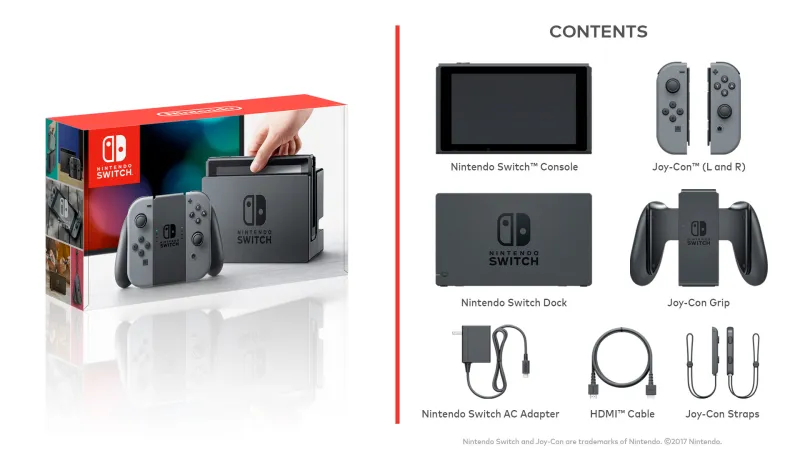

Subscribe today to get the first appearance of Dragon Quest on our cover!
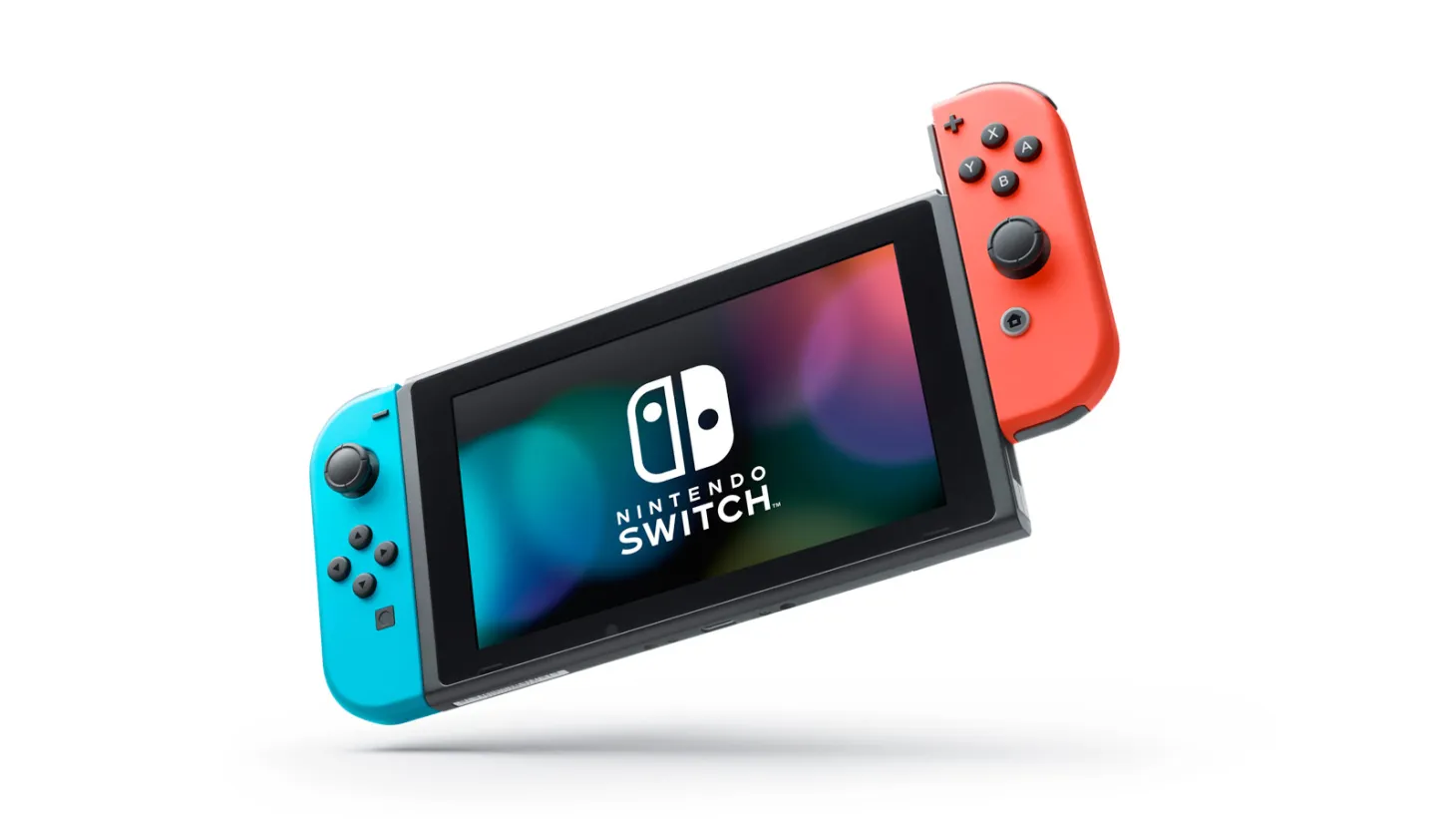
Nintendo has always been experimental. Sometimes the company's gambles pay off in big ways (Wii), and sometimes they stumble in the market (Wii U). Ether way, consumers are always eager to see the company's next big step forward in the gaming space. The Switch is Nintendo's latest experiment, and it is full of fun ideas. We love the system's clean user interface and overall design, and moving between televisions and traveling with it is incredibly easy. On the other hand, the controller that makes all of this possible is a bit of a mixed bag. We put the Switch through its paces to find out how well the final product stacks up to its promise.
For the last several console generations, Nintendo has come up short on horsepower, relying more on unique mechanics and system features to sell its consoles. The Switch is no exception. A custom Nvidia Tegra processor makes the Switch more powerful than the Wii U, but still underpowered compared to the PS4 and Xbox One - even though those consoles are more than three years old.
However, processing power isn't everything. Clever art direction can make a game look gorgeous without being realistic, as Nintendo's stable of colorful and iconic characters have illustrated over the years. The Legend of Zelda: Breath of the Wild is a perfect example; despite also running on the Wii U, the Switch's flagship launch title doesn't look out of place in today's market thanks to Nintendo's stunning visual style. However, given Nintendo's difficulty courting third-party developers in the past, the company is going to have to work especially hard to distinguish itself graphically and attract developmental support when its competitors are pushing 4K.
The Switch's outer shell doesn't seem outdated. The tablet features a sturdy construction and simple design, and is only slightly heavier than tablets of similar size. The unit's volume buttons produce a satisfying click, and the power button is recessed, which helps prevent the system from turning on and off accidentally.
The only weak aspect of the tablet's design is a flimsy kickstand used to prop the system up in tabletop mode, which snapped off the second time we used it. Fortunately, we snapped the kickstand back into place and haven't had a problem since, but we wonder how well this object holds up after repeated use. The kickstand also doubles as the cover for the system's microSD slot, which seems like a risky move, and we hope it doesn't result in too many lost SD cards.
Popping the Switch tablet in and out of its TV dock is easy. As promised, games transfer almost immediately between the tablet's screen and your television. The dock itself is mostly a shell for the tablet, but it needs to be plugged in for the Switch to display on a TV, and there is no way to connect to a television without a dock. However, we tested multiple docks, and they all immediately recognized our Switch, so you can easily move the unit between locations with Switch docks. We aren't big fans of the dock's back cover, which is meant to conceal the system's cords; this rear compartment feels flimsy, and we couldn't close it while using a few third-party HDMI cords because they were too thick.

When taking the system on the go, Nintendo says you can expect between three and six hours of battery life. We squeezed 2 hours and 50 minutes out of the system while playing The Legend of Zelda: Breath of the Wild in handheld mode.
While technically a handheld system, the Switch is only portable in the way devices like the iPad are portable. It's large, and though it can technically fit in a back pocket, that isn't exactly comfortable or convenient. We recommend a carrying case (or similar form of protection) if you plan on traveling with the unit.
Games look great even when you're away from the TV thanks to the Switch's built-in 6.2-inch LCD touch screen, which is crisp and scratch-resistant. However, given the system's portability, you'll likely want some kind of screen guard. The touchscreen is very responsive, but we have yet to see how well games use it. Games run at a lower resolution of 720p on this screen to help conserve battery life. While the lower resolution is barely noticeable, we encountered situations where text was too small to read clearly. This has the potential to be a serious problem if developers don't actively optimize their games for both displays.
The built-in speakers are on the back of the unit. They produce mid-level sound that is easily drowned out in loud environments, so keep a pair of headphones handy to plug into the system's standard 3.5 mm headphone jack at the top of the tablet.
One of our biggest hardware concerns is the meager 32GB of onboard memory. Mario Kart 8 Deluxe takes up 7GB of space, while The Legend of Zelda: Breath of the Wild eats up 13.4GB, and the upcoming Dragon Quest Heroes I & II clocks in at 32GB. Game sizes aren't likely to start shrinking, so buying a separate microSD card is practically required to store games and DLC - a hidden expense buyers need to consider if they plan on using the digital marketplace in addition to physical media.
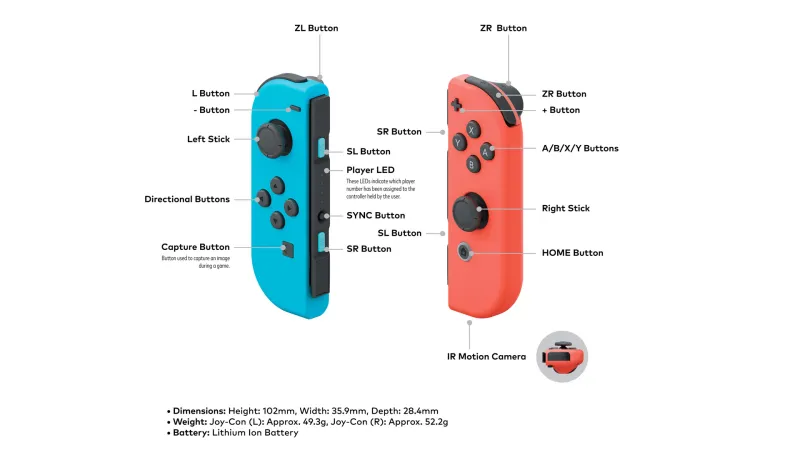
Controllers are an important piece of any new console, but the Switch controller is the heart of Nintendo's new system, as it gives players more ways to play than previous consoles. In general, we found that the Joy-Con's face and shoulder buttons are too small, and that the home, capture, plus, and minus buttons are all in awkward positions. We've also heard reports that the left Joy-Con occasionally loses sync with the system and powers down randomly, but this only happened to us once during testing. Here's a quick breakdown of the primary ways to play the Switch, with the caveat that the aforementioned issues apply to all three of the Joy-Con configurations.
Individual Joy-Cons: Each Joy-Con is incredibly light and has a soft matte texture. The face buttons feel well-built and produce a pleasant click. The much-hyped HD rumble is also impressive, and gives a greater amount of kickback than we expected from such a tiny device. We also loved how these controllers sync automatically as soon as you slide them onto the tablet.
Nintendo claims the charge for each individual Joy-Con will last for about 30 hours, and it took a long time for the controllers to die on us. Unfortunately, when they do, you need to put them back on the tablet, which must be plugged in or docked to charge them. This is inconvenient, and the only other charging solution is a special charging grip, which is sold separately for $29.99.
On the practical side, the Joy-Cons are too small to hold comfortably for a long time anyway. Whether we were holding them individually or one in each hand, our fingers began cramping up after about an hour. The Joy-Cons get the job done in short bursts, but using them is a terrible long-term option.
Joy-Con Grip: The Joy-Con grip adds some much-needed substance to the individual Joy-Cons, transforming them into a passable controller. The grip's extra padding fills in the palms of your hands and helps prevent cramps. The left Joy-Con's face buttons work better as a d-pad in this configuration than we anticipated.
If you can't afford to shell out for Nintendo's Pro Controller, the Joy-Con grip configuration is the best way to play Switch games, but you never completely forget that you're holding a square controller.
Handheld Mode: Sliding the Joy-Cons onto the side of the Switch tablet transforms the system into something that looks like a larger PlayStation Vita. This is great for playing the Switch on the go, but it isn't optimal for at-home play given the decreased resolution on the smaller screen. Having the tablet sandwiched between the two controllers alleviated some hand pain, but it still produced discomfort at the base of our thumbs after long play sessions.
Pro Controller: Nintendo's Joy-Con controllers get uncomfortable during long gameplay sessions, so anyone who plans to spend a significant amount of time playing traditional video games on the Switch should buy a Switch Pro Controller ($69.99). The Pro Controller has a much more comfortable form factor that feels a lot like the PS4 and Xbox One controllers, but it isn't as polished as Sony or Microsoft's offerings. The d-pad is stiff and its shoulder buttons are digital instead of analog triggers. However, the sticks feel good and the face buttons are nice and sturdy. After several hours of game time, we were grateful to have the Pro Controller, and we continually went back to it over the Joy-Cons.

The Switch's dashboard might be Nintendo's best UI to date. We breezed through the first-time system set-up, which is as simple as entering a name and selecting a player icon. Much like the PS4 dashboard, all your Switch games and apps are displayed along a media bar that scrolls horizontally across the middle of the screen. This content could get crowded once you have more games, but the overall design is simple and elegant, and can be navigated with a controller or the touchscreen.
Along the bottom of the screen, useful buttons give you access to the system's settings, the eShop, and your photo album, which houses screenshots you take using the controller's capture button. We're disappointed you can't organize photos into subfolders, but you can easily sort them by game. You can also edit each photo with personalized captions. Another useful button along the bottom of the dashboard takes you to the Switch's news feed, which is full of useful console tips and news about up coming Nintendo games. The Dashboard itself is quiet, but the buttons make different-yet-satisfying sounds when you click them.
We were surprised to find Nintendo's Miis buried in the settings menu, but these customizable avatars are still around, even though their significance has diminished. Mii customization is as robust as ever, and you can even copy over a Mii if you are fond of the critters you designed on the Wii U and have one saved to an Amiibo.
The Amiibo's NFC reader is built into the left Joy-Con's analog stick, which makes it easy to register Amiibos to your profile. Unfortunately, there isn't much else to do with your Amiibo collection on the Switch Dashboard. Of course, Nintendo plans to continue Amiibo support with future game releases.
The settings menu also houses options to calibrate you controllers, pick dashboard themes (right now just black or white), adjust your parental controls, or turn on airplane mode. Overall, the Switch's menus are clean and easy to navigate.
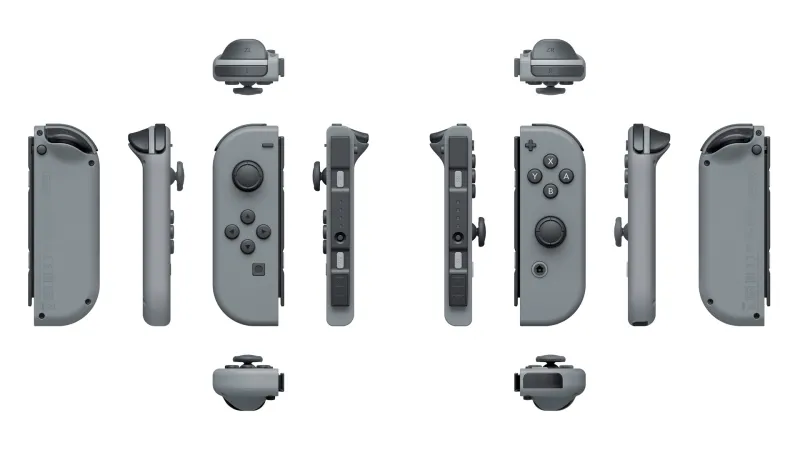
The Switch’s day-one update unlocks a number of important online features, such as friend-list management, an active news feed, and the online store. After some thorough hands-on time with these features, here are our impressions.
Online Store: Nintendo’s Switch eShop is bare-bones at this point, with only about a dozen games available. We like the store’s clean design and straightforward organization, but were surprised that it lacked the traditionally upbeat music Nintendo usually provides for its eShops.
Games are organized by “recent releases” and “coming soon” tabs. There is also a tab that lets you enter a code if you have already purchased a game through a different retailer. If you search for a game, you can add filters such as price point or genre. Every game features a good deal of info such as its rating and supported controller modes, and a few games even offer downloadable demos.
At this point, it’s not hard to find games, but we’re interested to see how Nintendo resurfaces older titles as the Switch’s library grows.
Photo Sharing: Sharing your gaming triumphs or spectacular blunders is practically a standard console feature these days. Nintendo’s capture button allows you to instantly capture the action on your screen and save those photos to the system’s internal memory. We found that taking a picture on the Switch was much faster than on the PS4 or Xbox One. Unfortunately, if you’re too slow hitting the capture button, you can’t look back through the last few minutes to find that perfect shot, because your gameplay isn’t archived. You also can’t share video, like you can on the PS4 or Xbox One. Whether this is added down the line remains to be seen, but the Switch’s photo capture feels limited right now.
Posting screens to your social channels is incredibly easy, and I had no problem linking (or unlinking) my Facebook and Twitter accounts to my Switch. However, to post a screen, you first need to suspend the software you’re using by hitting the home button and then navigating to your Switch’s Album tab, which feels like too many steps. From the Switch’s Album, you can share your favorite gaming moments. Facebook and Twitter are the only two services available at launch, however, so the offering is limited. If you’re desperate to add your Switch screen captures to Instagram, you can save photos to an SD card and transport them over to a PC.
Friends List: Friends lists are an important way for players to connect with other gamers online and participate in multiplayer gaming, but Nintendo’s approach to online friends lists has always been obtuse, requiring players to input a long series of digits called a “friend code” to add players to their list of digital companions.
The Switch makes adding friends to your virtual list a bit easier, but the process still has complications. Friend codes are still a part of the picture, and acquiring your friend’s code and then inputting it into your system is still a cumbersome process. However, you can now also add people you’ve recently played games with to your friends list without a code. You can also link your Miitomo, Super Mario Run, or other Nintendo mobile apps to your Switch account and quickly find friends from those apps to add to your Switch account. Finally, you can use the Switch’s NFC technology to make friends with people if your Switches are in the same room. These new ways to add friends helps smooth out the process, but you still can’t add a friend by simply searching for their player ID.
Once you are friends, you can browse someone’s play activity and track how long you’ve been friends. Unfortunately, that’s the limit of Nintendo’s current friend system. You can’t message your friends, voice chat, or invite them to games. These are glaring omissions, and though Nintendo could add such features on the path to launching its paid online service this fall, not having them at launch makes your Switch friends list feel pointless.
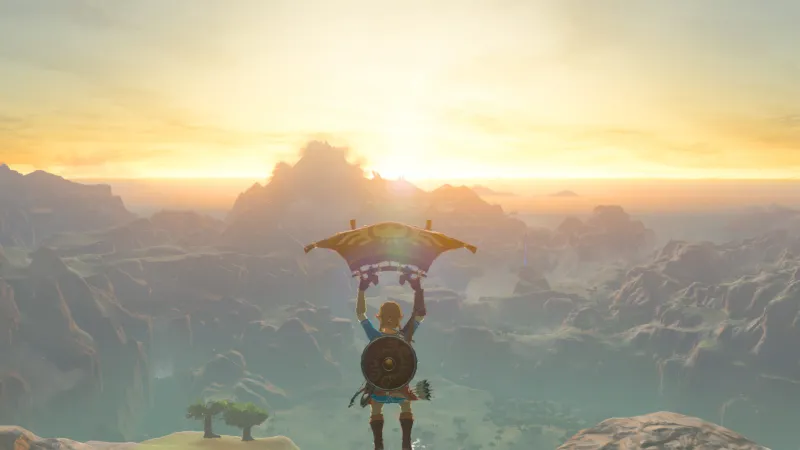
The best technology in the world doesn’t make a console great. The success of a video game console is determined by its games, and the Switch’s launch lineup is decidedly lackluster. More than half of the Switch’s dozen launch titles are older games (I Am Setsuna, Little Inferno, Human Resource Machine, World of Goo), and many have been available on other consoles for years. Our time with other launch games like 1-2-Switch and Super Bomberman R has not been favorable. Though our early impressions of Snipperclips are positive, it’s not worth buying a system for.
Of course, the biggest guns in the Switch’s launch line-up is The Legend of Zelda: Breath of the Wild, which is now one of the best-reviewed video games of all time. But remember that Zelda fans don’t need to buy a switch to play Breath of the Wild; a nearly identical version of that game is available on the Wii U. This leaves consumers with few compelling reasons to purchase a Switch at launch.
Looking further out provides consumers with a few more reasons to own a Switch. Throughout the year, Switch owners will have access to a number of notable rereleases such as Lego City Undercover, Mario Kart 8 Deluxe, and Minecraft. A few high-profile indie games such as Yooka-Laylee, SteamWorld Dig 2, and Has-Been Heroes will also be making their way to the Switch.
When it comes to big budget, high-profile releases on the horizon, the Switch comes up short. Upcoming games like the Untitled Shin Megami Tensei game, Xenoblade Chronicles 2, a new Pokémon title, and Suda 51’s untitled game featuring Travis Touchdown sound promising, but we don’t know enough about these projects to pin much hope on them. That leaves titles like Super Mario Odyssey, Xenoblade Chronicles 2, Splatoon 2 as well as a few notable sports titles like NBA 2K18.
More companies will probably announce new Switch titles, and the console’s library is bound to grow. However, the games on offer out of the gate are lacking compared to previous console launches, Nintendo or otherwise.
Nintendo isn’t afraid of thinking outside the box, but it feels like the company made major compromises for the Switch. The individual Joy-Cons are so small they leave you with hand cramps, and even when combined with the Joy-Con grip, they feel unnatural. A general lack of online functionality and a lackluster launch lineup also have us wondering if Nintendo felt rushed to get the Switch on store shelves. We’re happy with the tablet’s overall design, and transitioning from a television console to handheld mode works like magic. We love the Switch’s premise, but Nintendo and its third-party partners still need to prove that the unique features are more than just gimmicks.

Explore your favorite games in premium print format, delivered to your door.